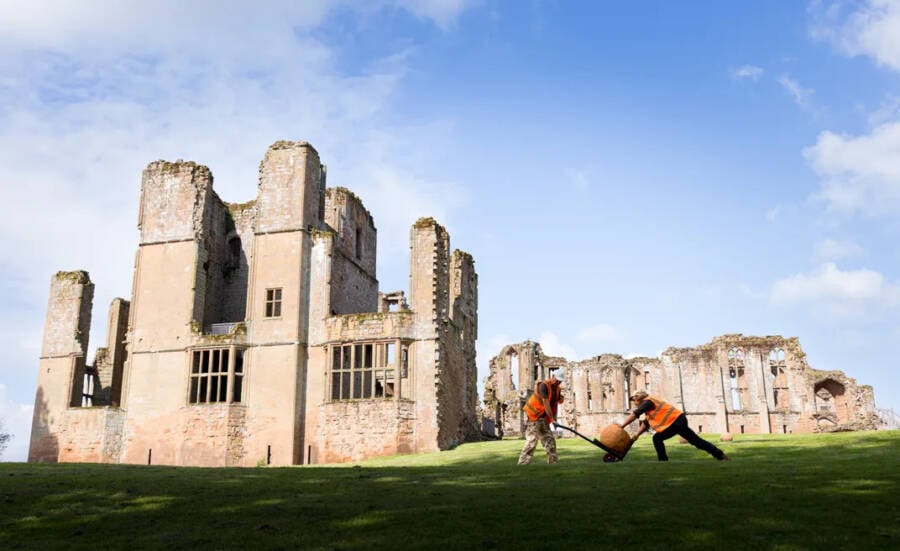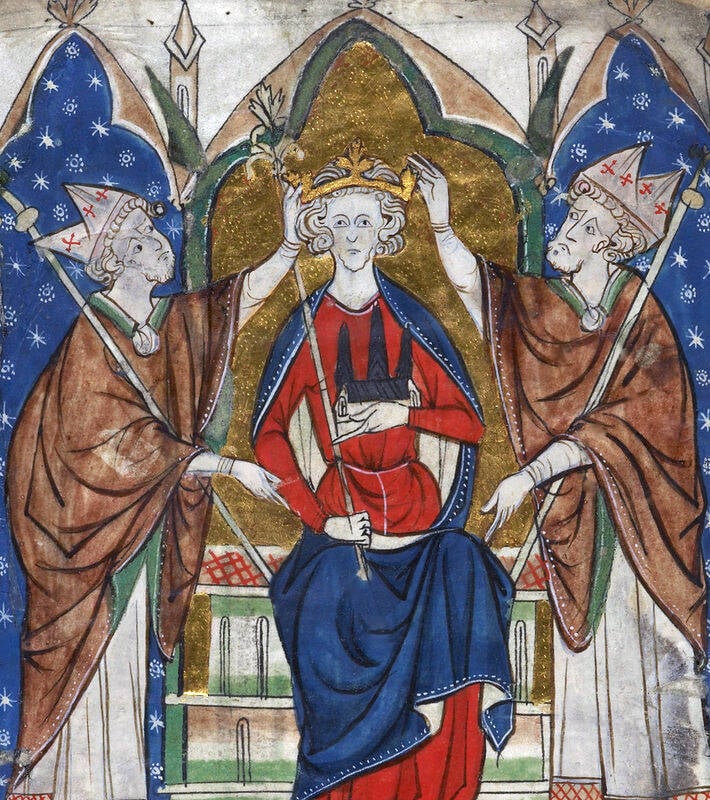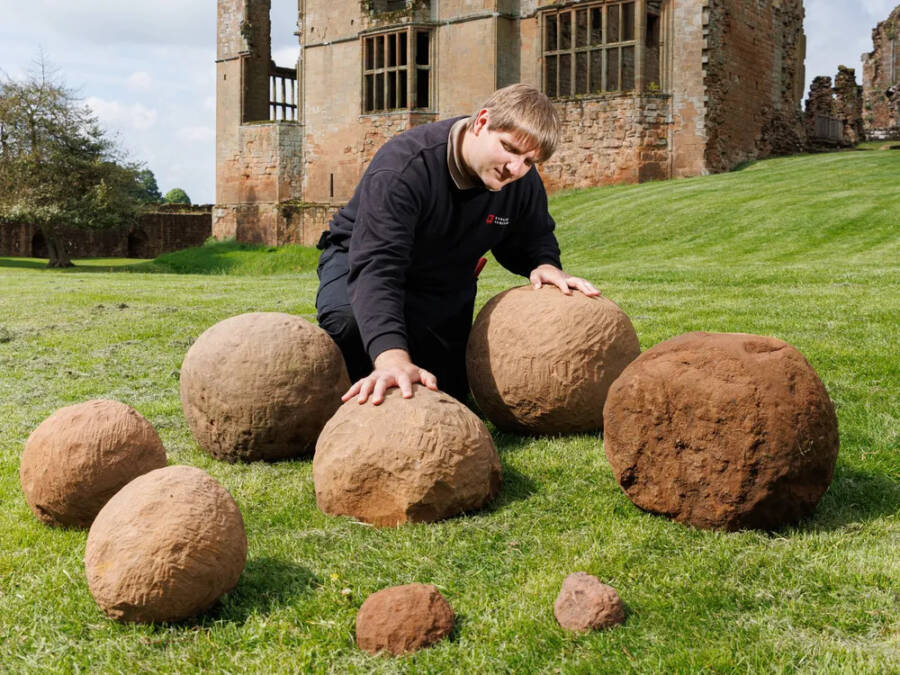In 1266, Kenilworth Castle was the site of what's believed to be the longest siege in the history of medieval England, and these catapult shots were fired during the violent event.

English HeritageThe eight 13th-century catapult stones found at Kenilworth Castle.
Construction workers at Kenilworth Castle in central England recently unearthed eight catapult stones that were fired during King Henry III’s 172-day siege of the fortress in the 13th century.
Although they are nearly 800 years old, the stones are in remarkable condition. Now, historians hope they may reveal more about the history of what was once the home of royals and noblemen alike.
Construction Workers Discover Catapult Stones In England
While making recent accessibility upgrades on the grounds of Kenilworth Castle near Birmingham, England, construction workers stumbled upon a piece of medieval history. Just outside the castle walls, they discovered eight “perfectly preserved” catapult shots of various sizes. The smallest stone weighs just two pounds, while the largest weighs 230 pounds.
As for the age of the stones, historians believe they were fired during a famous siege by King Henry III in 1266.

English HeritageKenilworth Castle in central England.
“We were able to immediately link these findings to the 1266 siege because of similar finds recovered in the 1960s,” Will Wyeth, English Heritage’s properties historian, told the BBC.
“However, it’s not every day we get lucky enough to stumble across historical remains like this by chance,” Wyeth continued. “Imagine the surprise of the team when we unearthed these impressive stone projectiles that are nearly 800 years old.”
Now, these catapult shots are shedding new light on what is believed to be the longest siege in medieval English history.
Inside The Siege Of Kenilworth Castle
In 1264, the Second Barons’ War broke out between royalist forces and a group of noble rebels led by Simon de Montfort. The rebels had control of Kenilworth Castle, and in June 1266, King Henry III’s men laid siege to the fortress.

Public DomainKing Henry III in a 13th-century manuscript.
The siege lasted 172 days, and during that time, the king’s troops attacked the castle with catapults and crossbows. The rebels inside had catapults of their own, and experts believe the stones discovered recently were fired from both sides.
Wyeth told the BBC that the catapult shots “would have caused some serious damage when fired from war machines. In fact, records show that one of Henry III‘s wooden siege towers, containing around 200 crossbowmen, was destroyed by just one well-aimed missile.”

English HeritageAn English Heritage representative inspects the catapult stones.
The siege ended in December 1266 when the rebels surrendered due to disease and starvation. Kenilworth Castle returned to the hands of the monarchy, and over the following centuries, it was the site of several important events in royal history.
In 1327, Edward II was at Kenilworth when he agreed to abdicate from the throne so his son could be crowned king. And in 1575, Robert Dudley, the Earl of Leicester, hosted a three-week-long party at the castle in an attempt to win the heart of Queen Elizabeth I.
Now, 800 years after these stones were last used in battle, they’ve been exposed once more to serve as a reminder of Kenilworth Castle’s rich history.
After reading about the catapult stones found at Kenilworth Castle, go inside seven haunted castles around the world. Then, learn about Highclere Castle, the stunning palace where Downton Abbey was filmed.





